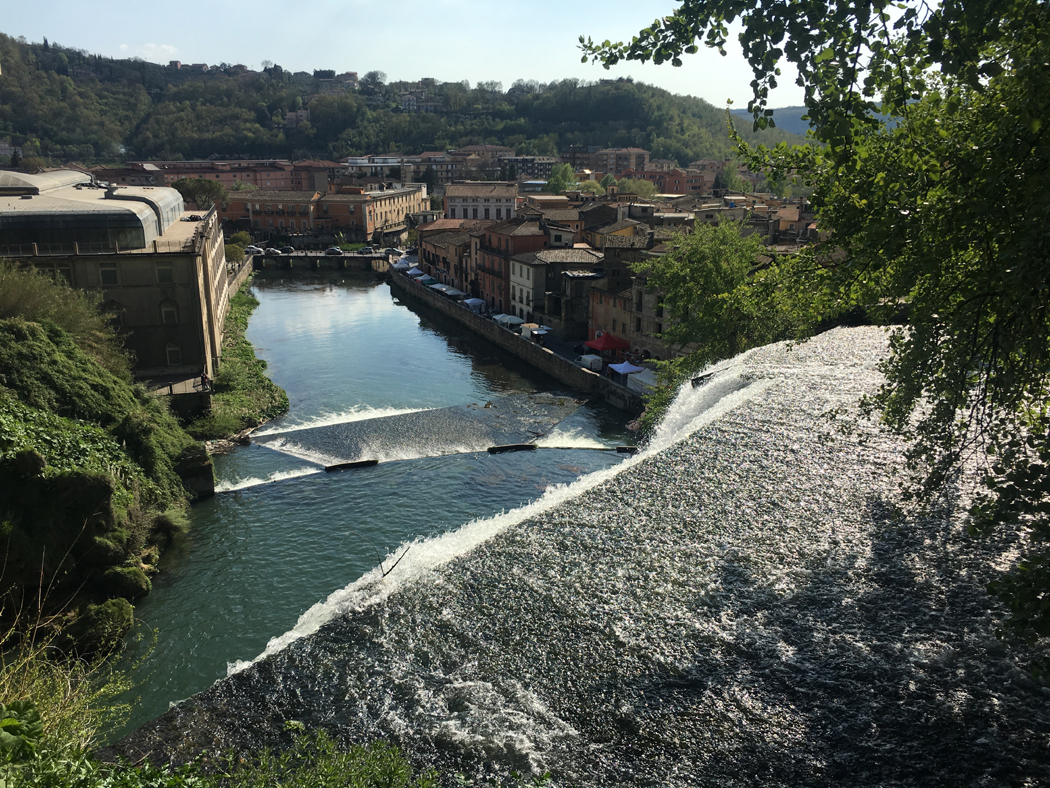At night that part of Isola del Liri under the waterfall changes its face and becomes a special place dedicated to the sweet life, to good times and for a moment I imagined the 'Ciociarian' canals Navigli.
What are the canals Navigli? Let me set the scene. Despite appearances, Milan is a city of water but its canals have been transformed into streets. There remain a few open canals, those with historical references, such as hydraulic engineering by Leonardo da Vinci, and in recent years their banks have become a social ‘movie set’.
The Navigli areas of Milan are full of bars, restaurants with cuisine from around the world, art exhibitions and are now an international symbol of good times you can spend in Milan. They are frequented by all kinds of people, from top models and famous soccer players, to all those who just wish to experience the happy face of Milan.
On summer evenings, Isola del Liri made me relive that spirit but in a way that only Ciociaria can give. We are in one of the centres of history, a stone's throw from the incredible cyclopean walls of Arpino or Alatri. In these parts were fought the first major Roman wars against the Sunnis and, today, youth from around the world still compete at the Certamen, but in Latin. Cicero was born in Arpino.
Here the Italian Renaissance breathed at every moment with the view of the castle Boncompagni that stands just above the waterfall, the only European city to have a waterfall right in the city centre. The lights at night, which illuminate the castle and the waterfall, and the sound of water power that seeks peace downstream give real grandeur to these Ciociarian canals.
Rounding out the mix of sensations, you breathe an international air with the style of the buildings in the centre that brings you once again to the Industrial Revolution, to a northern European city and in New York, with some of the old abandoned paper and wool factories turned into recording studios, theatres and underground clubs.
With nostalgia and a sense of history I notice an old sign of the Workers' Mutual Aid Society, founded in 1862, owned by the workers of the mills, and a "hammer and sickle" engraved on a stone paved road.
By day Isola del Liri is a bustle of young people with instruments on their shoulders going to practice in some local hideaway, until at night the city is overrun with musical notes of all kinds. Isola del Liri is twinned with New Orleans for life from its veins of the canals, which fed the turbines dozens of the old paper mills, and music.
The whole city is crossed by an underground network of channels and tunnels that were used to power turbines of each of the numerous factories that made Isola del Liri one of the largest industrial centres of the nineteenth century. Looking carefully at streams of water you can even notice where the water was channeled from some place and where it came out from the foundations of some ancient industrial building.
Isola del Liri is famous for its waterfall (cascades) dominated by the castle remembered in paintings over the centuries by artists from all over the world, but around the city there are many other waterfalls, cascades and weirs that make the flow of the river even more dynamic.
You walk along a stream of water and music and, with spring, the banks of the Liri, under the waterfall, become full of life.
A crowd of people of all ages listen to live music, drink a glass or two of local wine or beer, sitting or standing, and the surprising thing is that many of them speak of art and history!!
Do you know about the Liri Blues Festival? I have already ‘booked myself a seat’?








Follow us